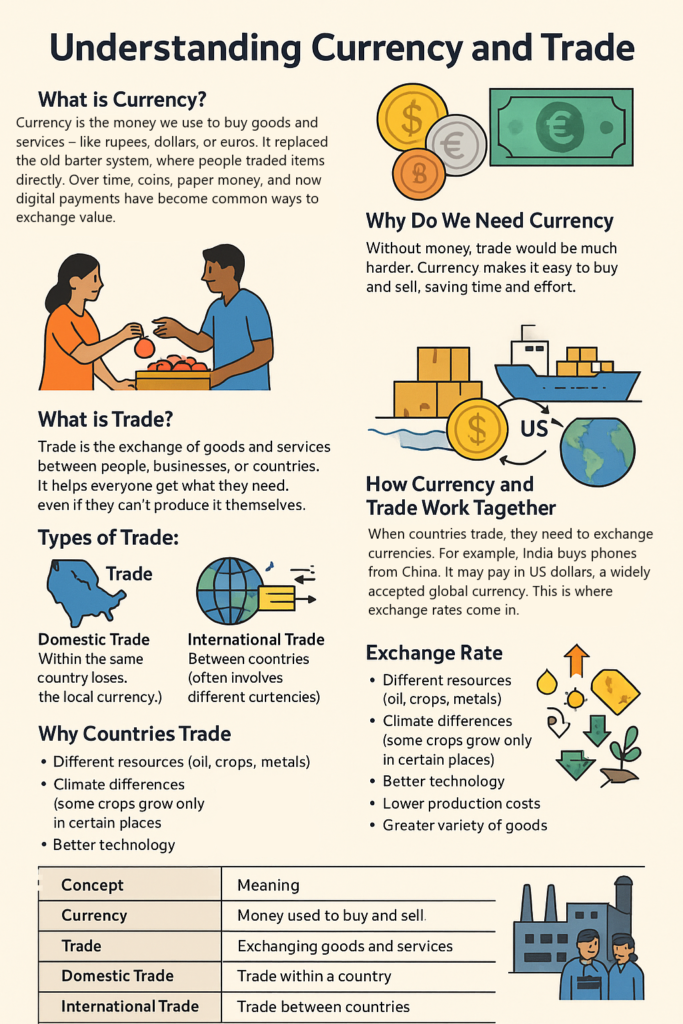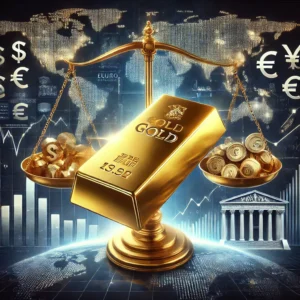What is the Foreign Exchange (Forex) Market in India?
The Foreign Exchange (Forex) Market in India is a global marketplace where currencies are bought and sold. It’s where the Indian Rupee (INR) is exchanged for foreign currencies like the US Dollar (USD), Euro (EUR), British Pound (GBP), and others. For example, when an Indian company imports goods from the US, it needs to convert Indian Rupees (INR) into US Dollars (USD) to pay for the goods. Similarly, when a person is traveling abroad, they need to exchange their INR for the currency of the country they’re visiting.

Why Does the Forex Market Matter in India?
The Forex market is crucial for India for several reasons:
- International Trade: Indian businesses involved in exports and imports need to exchange INR for foreign currencies to carry out international transactions. This helps India buy goods and services from other countries and sell its products abroad.
- Investment and Foreign Direct Investment (FDI): Investors from India and abroad use the Forex market to convert currencies when making investments. For example, a US company investing in India needs to convert USD into INR.
- Tourism: When Indian travelers visit foreign countries, they need to exchange INR for the foreign currency.
- Government Reserves: The Reserve Bank of India (RBI) manages the country’s foreign exchange reserves, ensuring that there’s enough foreign currency to manage the country’s payments and obligations abroad.
How Does Currency Trading Work in India?
Currency trading in India operates under the supervision of the Reserve Bank of India (RBI), which manages the Indian Rupee and keeps the Forex market stable. Currency trading in India usually happens through banks, financial institutions, and currency exchange platforms.
Key Concepts in Currency Trading:
- Currency Pairs: In currency trading, currencies are traded in pairs. For example, the currency pair USD/INR shows the value of 1 US Dollar in terms of Indian Rupees. In Forex trading, you are either buying the first currency and selling the second, or vice versa.
- For example, if you buy USD/INR, you’re buying US Dollars and selling Indian Rupees.
- Exchange Rate: The exchange rate is the value of one currency in terms of another. For instance, if the exchange rate of USD/INR is 75, it means 1 US Dollar equals 75 Indian Rupees. The exchange rate can change every second, depending on various economic and market factors.
- Bid and Ask Price:
- Bid Price: The price at which the market (or your broker) is willing to buy a currency pair from you.
- Ask Price: The price at which the market is willing to sell the currency pair to you.
The difference between the bid price and the ask price is known as the spread.
- Leverage: Leverage allows traders to control a larger position in the market with a smaller amount of capital. For example, with a leverage of 50:1, you can control ₹50,000 worth of currency with only ₹1,000. However, leverage can increase both profits and risks.
- Market Participants:
- Reserve Bank of India (RBI): The central bank of India, which manages the Indian Rupee and maintains stability in the Forex market.
- Banks and Financial Institutions: They play a big role in buying and selling currencies for both individuals and businesses.
- Corporate and Exporters: Businesses involved in importing and exporting goods need to buy or sell foreign currencies for international trade.
- Retail Traders: Individuals who trade currencies through online Forex trading platforms.
How Do Currency Prices Change in India?
Currency prices in India, like in other countries, are influenced by supply and demand in the market. Several factors affect the value of the Indian Rupee (INR) in the Forex market:
- Economic Indicators:
- GDP Growth: If India’s economy is growing rapidly, it can lead to an appreciation of the INR.
- Inflation Rates: Higher inflation in India can lead to a decrease in the value of the INR.
- Interest Rates: When the Reserve Bank of India (RBI) raises interest rates, the INR can become stronger because it attracts more foreign investment.
- Trade Balance: If India’s exports are higher than its imports, the INR may appreciate due to higher demand for the INR.
- Global Events and Market Sentiment:
- Events like elections, political stability, or changes in global markets (such as a financial crisis) can influence the value of the INR.
- If investors feel confident about India’s economy, they may buy more INR, driving up its value.
- RBI’s Interventions: The RBI may step into the market to influence the value of the INR and control volatility. If the INR falls too much, the RBI may sell foreign currencies from its reserves to buy INR and stabilize the currency.
Conclusion
The Foreign Exchange (Forex) Market in India is where the Indian Rupee (INR) is exchanged for other foreign currencies like US Dollars, Euros, and Pounds. This market plays a crucial role in international trade, investment, and tourism.
Currency trading involves buying and selling currencies in pairs, and its value is affected by factors such as economic data, interest rates, and global events. While Forex trading can offer profitable opportunities, it comes with risks, especially related to volatility and leverage.
For anyone in India interested in Forex trading, it’s important to understand these concepts, stay updated on market conditions, and trade responsibly.











